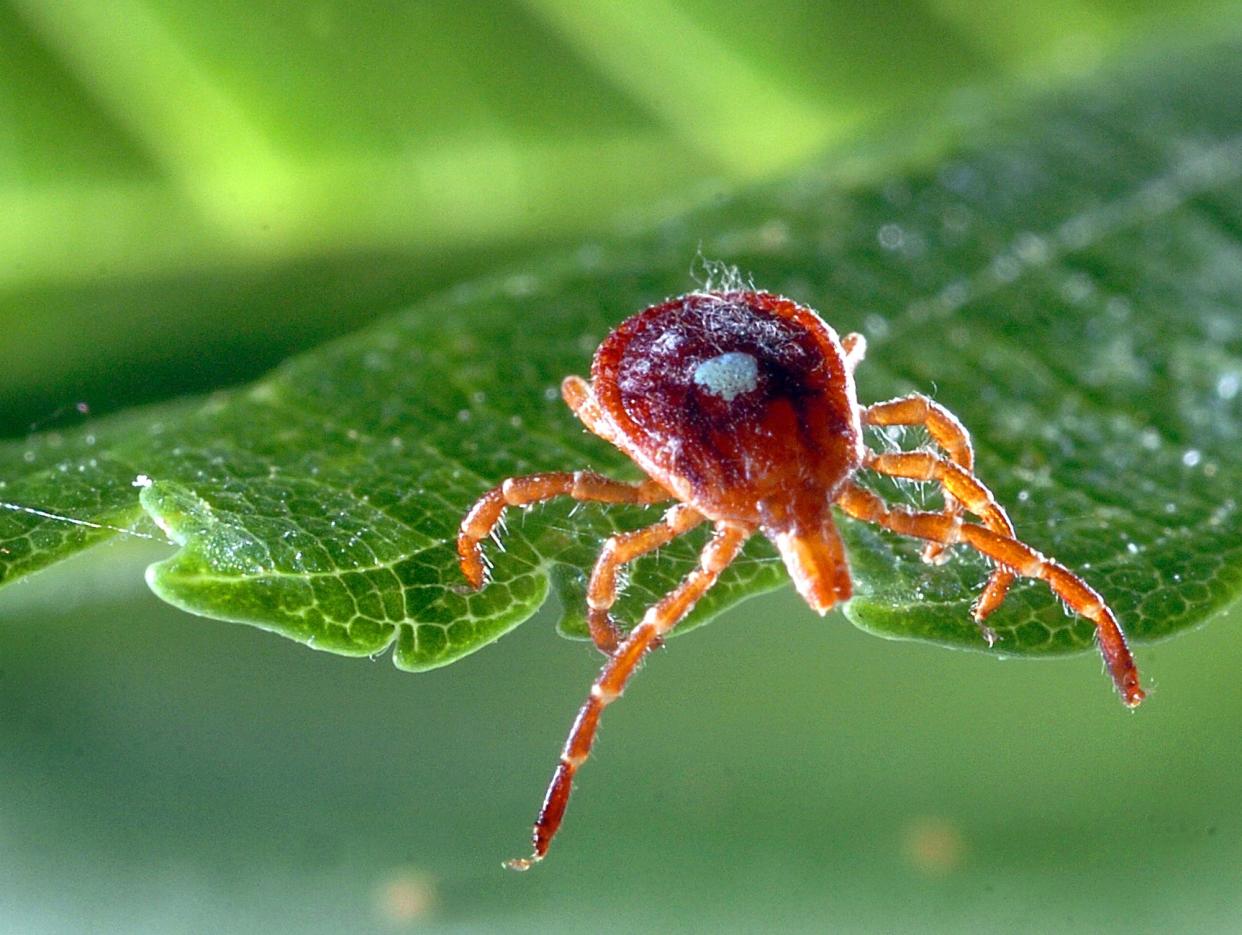Lone star now most abundant Kentucky tick. Its bite can make you allergic to beef, pork

The bite of what is now Kentucky's most abundant tick species can trigger an allergy to red meat and some other animal food products, according to medical research and statewide tick surveys.
Climate change is helping the tick's population flourish. And as the agriculture and logging industries push into the commonwealth's forests, the interface between humans and ticks grows more frequent.
Named for the characteristic white spot on its back, the lone star tick has established itself as Kentucky's most common tick species in recent surveys, according to Reddy Palli, state entomologist and chair of the Department of Entomology at the University of Kentucky.
Its mounting populations could place more Kentuckians at risk of tickborne illnesses, as well as alpha-gal syndrome — an allergy to mammalian meat and food products triggered by the tick's saliva.
Where is the lone star tick found?
Populations of the native lone star tick have been abundant in the U.S. for many years. But warming temperatures have helped them gain a foothold in new regions, and establish further in Kentucky.
"The warming temperatures are helping mosquitoes and ticks breed and survive," Palli said, compared to cooler temperatures in the state several decades ago.
"Linked, in part, to a warming climate, there has been an increase in the number of ticks and associated diseases recorded in the United States and Canada, as well as in Europe," according to the New England Journal of Medicine. "Persistently warming temperatures may not only lead to the continued geographic range expansion of some ticks but may also extend their active season."
Fond of Kentucky's warming climate, the lone star tick is now established in dozens of Kentucky counties, including Jefferson County, according to data from the Centers for Disease Control and Prevention. State-level surveys produced even more pervasive findings, with the lone star tick making appearances in virtually every corner of the state.
Before recent surveys, the blacklegged tick, also known as the deer tick, was thought to be the more-common type in Kentucky. Findings in recent years have instead pointed to the lone star tick.
"I think that it has been there all along," Palli said, "but it was not documented.”
What diseases do lone star ticks carry?
About 10% of the lone star ticks surveyed in Kentucky were carrying a pathogen called ehrlichia chaffeensis, Palli said.
This pathogen is transmitted to humans primarily by the lone star tick. It causes human monocytic ehrlichiosis, which may trigger fever, headache, myalgia, malaise, rash and other symptoms, according to one guide on infectious diseases.
But the species can also cause alpha-gal syndrome, a hypersensitivity to oligosaccharide galactose-alpha-1,3-galactose, or alpha-gal, found in red meat, such as beef and pork, and other products from mammals, like dairy and gelatins.
The alpha-gal allergic reaction may not come until several hours after eating the animal product, according to the CDC, and may include:
Hives or itchy rash
Nausea or vomiting
Heartburn or indigestion
Diarrhea
Cough, shortness of breath, or difficulty breathing
Drop in blood pressure
Swelling of the lips, throat, tongue, or eye lids
Dizziness or faintness
Severe stomach pain
It can also trigger anaphylaxis, a full-body, possibly fatal allergic reaction.
Upon finding a tick bite, many people worry first about Lyme disease, because of its severe symptoms and infamy, Palli said. But monocytic ehrlichiosis or alpha-gal syndrome are a far more common consequence of a tick bite in Kentucky.
Up to 450,000 people nationally might have been affected by the syndrome since 2010, a recent CDC study found.
Prevention and awareness

Actively avoiding tick bites, and monitoring for them consistently during and after time in wooded areas, are the best measures to avoid pathogens carried by ticks, Palli said.
Insect repellant, as well as long sleeves and pants when possible, can help prevent tick bites.
More: 6 invasive bugs to watch for this summer in Kentucky
After time outdoors, experts recommend checking for ticks on the body, clothing, gear and pets, followed by a shower.
If a bite is found, careful removal of the tick with tweezers — steady and upward, without twisting — is key. Rubbing alcohol or soap and water can help clean the area of skin after the tick is removed.
If the area around a tick bite is flaring up, contacting a physician is a safe bet. Some tickborne pathogens can be quelled with the right prescribed medicine, especially if taken shortly after a bite.
Certain workers who spend long periods of time in forest areas, like loggers, are particularly at risk from ticks. Physician education is also important, Palli said, as some may not yet be familiar with identifying alpha-gal syndrome while research on the condition continues to grow.
Connor Giffin is an environmental reporter for The Courier Journal and a corps member with Report for America, a national service program that places journalists in local newsrooms to report on under-covered issues. The program funds up to half of corps members’ salaries, but requires a portion also be raised through local community fundraising. To support local environmental reporting in Kentucky, tax-deductible donations can be made at courier-journal.com/RFA.
Learn more about RFA at reportforamerica.org. Reach Connor directly at cgiffin@gannett.com or on Twitter @byconnorgiffin.
This article originally appeared on Louisville Courier Journal: The lone star can cause meat allergy. Here's what to watch for

